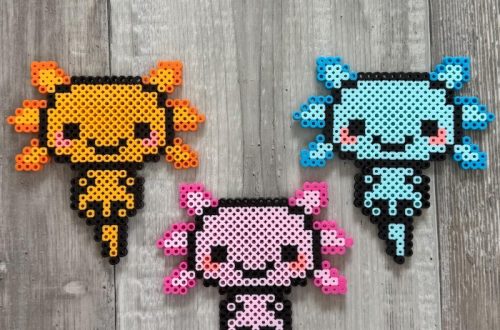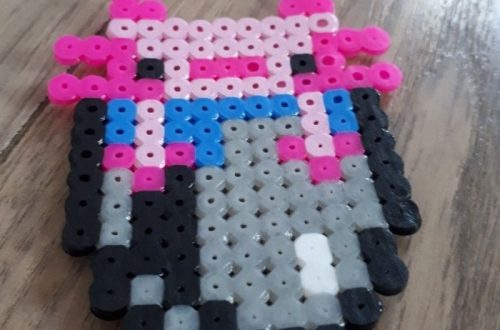Part 1: Drawing Pencils
One of the most crucial tools for any artist is a set of high-quality drawing pencils. The right pencils can make a world of difference in the final outcome of your artwork. Here are two essential points to consider when choosing drawing pencils for your kit:
1. Variety of Lead Hardness:
In the world of drawing, versatility is key, and having a range of lead grades at your disposal is essential. Different drawing techniques require different lead hardness, and a good drawing pencil set should include a variety of lead grades, ranging from 9H (the hardest) to 9B (the softest). The harder leads produce lighter and more precise lines, perfect for detailed and controlled work. Conversely, softer leads create darker and more expressive strokes, making them ideal for shading and creating bold, dynamic lines. With a variety of lead grades in your kit, you can confidently tackle a wide array of drawing styles and techniques, from intricate and precise architectural sketches to expressive and bold portrait drawings.

2. Quality of Materials:
When selecting drawing pencils, it’s crucial to consider the quality of the materials used in their construction. High-quality pencils are designed with strong, break-resistant leads that are capable of creating clean, precise lines without crumbling or smudging. These leads are also easy to sharpen to a fine point, allowing for detailed and controlled mark-making. Additionally, the construction of the pencil itself plays a significant role in the drawing experience. Look for pencils with a comfortable grip that minimizes hand fatigue during extended drawing sessions. A durable casing is also essential, as it ensures that the pencil maintains its integrity and sharpens smoothly without splintering.
Investing in high-quality drawing pencils goes beyond simply having the right tools – it can greatly enhance your drawing experience and improve the overall quality of your artwork. With reliable, well-crafted pencils, you can confidently tackle intricate details, achieve precise shading, and create dynamic lines with ease. The superior performance and durability of high-quality drawing pencils allow you to focus on your creative process without the distractions of broken leads or uncomfortable grips. Furthermore, the consistency and reliability of these pencils enable you to produce artwork that reflects your true artistic vision, free from the limitations of inferior materials.
Part 2: Sketchbook
A sketchbook is a fundamental tool for artists of all levels. It’s a place to jot down ideas, practice new techniques, and experiment with different mediums. When selecting a sketchbook for your drawing kit, consider the following two points:
1. Paper Weight and Texture:
The weight and texture of the paper in a sketchbook can greatly impact the outcome of your drawings. Heavier-weight paper (around 100-120gsm) is ideal for sketching with pencils, as it can withstand erasing and shading without becoming too flimsy. The texture of the paper also plays a role in the finished look of your drawings – smooth paper is great for fine details, while textured paper adds depth and character to your artwork.
2. Portability and Durability:
A sketchbook is an indispensable tool for artists, enabling them to capture fleeting moments of inspiration and explore their creativity wherever they go. When selecting a sketchbook, portability and durability are key considerations. A portable sketchbook allows artists to record their ideas and observations on the spot, while a durable construction ensures that their drawings are protected from damage.

A sketchbook with a hardcover provides an added layer of protection for the artwork inside. The rigid cover helps prevent bending or creasing of the pages, ensuring that the sketches remain pristine and intact. Additionally, a sturdy spiral binding is ideal as it allows the sketchbook to lay flat, providing a seamless drawing surface and preventing pages from tearing or falling out. This feature is especially beneficial for artists who prefer to work across a double-page spread or need a stable surface to create detailed drawings.
Consider the size of the sketchbook as well. A conveniently sized sketchbook can easily fit into a bag or backpack, allowing artists to carry it with them wherever they go. The compact dimensions make it easy to pull out the sketchbook at a moment’s notice, whether it’s to capture a passing scene or to quickly sketch an idea that springs to mind.
Part 3: Erasers and Sharpeners
Having the right erasers and sharpeners in your drawing kit can make a significant difference in the clarity and precision of your drawings. Here are two key points to keep in mind when selecting erasers and sharpeners for your kit:
1. Kneaded Eraser:
A kneaded eraser is an indispensable tool for any artist, offering unparalleled versatility and precision. Its pliable nature allows it to be shaped into a fine point, making it ideal for erasing delicate details or selectively lifting off graphite to create highlights. Unlike traditional erasers, the kneaded eraser gently lifts marks from the paper without leaving behind eraser debris or damaging the surface. This makes it an essential tool for correcting mistakes without compromising the integrity of the artwork.
Investing in a high-quality kneaded eraser ensures that you have greater control and accuracy when employing erasing techniques. Whether it’s refining intricate linework, creating subtle tonal transitions, or adding highlights to your drawings, a reliable kneaded eraser is a valuable asset in your artistic toolkit. Its ability to manipulate and mold to fit various shapes and sizes makes it a go-to choice for artists seeking precision and finesse in their erasing methods.
2. Quality Pencil Sharpener:
A reliable pencil sharpener is a crucial tool in an artist’s kit, vital for maintaining sharp and consistent pencil points. When choosing a sharpener, it’s important to look for one with a sturdy blade that can produce fine points without breaking the lead. Electric sharpeners are a convenient option, providing rapid and effortless sharpening for artists who frequently use pencils in their work. These sharpeners offer precision and speed, making them a valuable addition to any studio setup.
On the other hand, portable manual sharpeners are perfect for artists who engage in on-the-go sketching and require a compact and lightweight option. These sharpeners are designed for easy transportation and provide a reliable way to keep pencils sharp and ready for use at all times. Whether it’s for studio work or outdoor drawing sessions, having a quality pencil sharpener ensures that artists can consistently achieve the fine points necessary for precise and detailed drawing.

Part 4: Drawing Tools
In addition to pencils and paper, there are a variety of other drawing tools that can enhance your artistic process and expand your creative possibilities. Here are two essential drawing tools to consider adding to your kit:
1. Blending Stumps and Tortillons:
Blending stumps and tortillons are indispensable tools for creating smooth, blended gradients and soft textures in your drawings. These cylindrical tools are made from tightly rolled paper and are used to blend and smudge graphite, charcoal, and other dry mediums. They allow for precise control and can be easily sharpened to create different blending effects.
2. Rulers and Straightedges:
While freehand drawing can be expressive and dynamic, there are times when precise, straight lines are necessary. A good quality ruler or straightedge can help you achieve accurate proportions, parallel lines, and consistent angles in your artwork. Transparent rulers are particularly useful for technical drawing, as they allow you to see through to your underlying sketches and reference points.
In conclusion, creating a comprehensive drawing kit requires careful consideration of the essential tools that will support your artistic process and help you achieve your creative vision. By investing in high-quality drawing pencils, a versatile sketchbook, reliable erasers and sharpeners, and a selection of essential drawing tools, you can build a kit that empowers you to explore new techniques and unleash your artistic potential.




